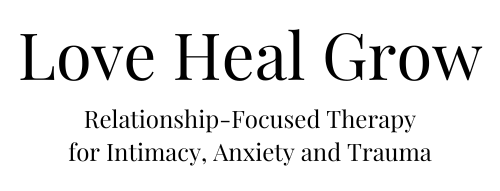
Trauma is a complicated thing. Sometimes, it makes some sense– like when you directly experience a traumatic event, you may find yourself having symptoms that you can at least explain, if not fully understand. But there are other types of trauma, too, like complex trauma and vicarious trauma.
Today, we’re going to discuss vicarious trauma, and hopefully make it a little easier for you to understand. If you’ve gone through vicarious trauma, you might not know it– so hopefully this article makes it possible for you to figure out whether or not this is a situation that applies to you!
What Is Vicarious Trauma?
Vicarious trauma, also known as compassion fatigue, is the psychological and emotional strain experienced indirectly by people who are exposed to the traumatic experiences of others. It primarily affects those in professions where they regularly engage with people who have experienced trauma, such as therapists, social workers, healthcare providers, and first responders.
As part of their job, these professionals immerse themselves in the stories and experiences of their clients or patients. But while this happens, they can absorb the emotional weight of these narratives, leading to symptoms similar to post-traumatic stress disorder (PTSD). While not directly experiencing the traumatic event, the repeated exposure to others’ trauma can deeply impact their psychological well-being.
Vicarious trauma’s impact isn’t solely confined to professional caregivers, though. It can affect anyone who regularly hears or witnesses the traumatic experiences of others, even in non-professional settings. For instance, if you’re supporting a loved one through a traumatic experience or illness, or if you’re regularly exposed to distressing news or social media content, you can also experience vicarious trauma. While the symptoms may manifest differently in each person, the shared aspect is the emotional toll taken as a result of indirect exposure to trauma.
Recognizing and addressing vicarious trauma is crucial for maintaining your mental health and well-being, so let’s take a look at some key symptoms now.
Symptoms of Vicarious Trauma
The symptoms of vicarious trauma will look different for every person, since the way we deal with trauma is unique. These symptoms can also vary in intensity and duration, and even if you are experiencing vicarious trauma, you might not experience all of them. But these are some of the most common signs of vicarious trauma, and if they resonate with your experience, you may want to seek support from a mental health professional.
- Intrusive Thoughts: Experiencing recurring, distressing thoughts, memories, or images related to the traumatic experiences of others, even when not directly engaged with those experiences.
- Emotional Exhaustion: Feeling emotionally drained, fatigued, or depleted due to absorbing the emotional weight of others’ traumatic stories and experiences.
- Increased Anxiety: Developing heightened levels of anxiety, nervousness, or restlessness, often triggered by exposure to traumatic content or situations.
- Emotional Numbness: Experiencing a sense of detachment, apathy, or emotional numbing as a protective mechanism against the overwhelming emotions associated with vicarious trauma.
- Avoidance Behavior: Intentionally avoiding situations, conversations, or activities that may remind one of the traumatic experiences heard or witnessed, in an effort to reduce emotional distress.
- Cynicism or Pessimism: Developing a negative or cynical outlook on life, work, or the possibility of making a positive impact due to exposure to others’ trauma.
- Difficulty Sleeping: Facing difficulties in falling asleep, staying asleep, or experiencing nightmares related to the traumatic stories or experiences heard or witnessed.
- Feelings of Helplessness: Becoming distressed by a lack of control or powerlessness in being able to help or make a difference for those affected by trauma.
- Anger or Irritability: Experiencing heightened levels of frustration, irritability, or anger, often stemming from the emotional burden of vicarious trauma.
- Hypervigilance: Being overly alert, watchful, or on edge, expecting similar traumatic situations to occur, which can lead to constant stress and tension.
- Loss of Meaning or Purpose: Feeling a decline in personal satisfaction, fulfillment, or a sense of purpose, often due to the overwhelming nature of vicarious trauma experiences.
- Physical Symptoms: Experiencing physical manifestations of stress, such as headaches, gastrointestinal problems, or muscle tension, as a result of the emotional toll from vicarious trauma.
Treating Vicarious Trauma
If you’re experiencing the negative impact of vicarious trauma, there is hope. With the right support, there are lots of techniques to deal with the effects of this trauma. Treatment involves a multifaceted approach that’s aimed at addressing the emotional, psychological, and physical impact of indirect exposure to trauma.
One major element of treating vicarious trauma is self-care and learning how to prioritize yourself. Because vicarious trauma often comes from the work environment, establishing clear boundaries between work and personal life is vital. This includes setting limits on the amount of exposure to traumatic content, whether it’s through client interactions, news, or other sources. Engaging in activities that promote relaxation, such as exercise, hobbies, mindfulness, or creative outlets, can also aid in emotional release and stress reduction. Developing a support network allows you to share experiences and feelings, which reduces the sense of isolation that contributes to the impact of vicarious trauma. If you’re experiencing vicarious trauma, there’s a good chance that others in your organization are, too– support from peers who know what you’re going through can help you process and understand why you feel the way you do.
Getting support from a mental health professional who specializes in trauma can also be very helpful. A therapist can help you develop coping strategies and address the specific symptoms. There are several therapeutic approaches that can help, like cognitive behavioral techniques, mindfulness practices, or eye movement desensitization and reprocessing (EMDR) to help people manage their reactions to vicarious trauma.
Managing vicarious trauma can be extremely challenging, but there is always a way to deal with it– even if you can can’t see it right now. If you feel like you may be experiencing vicarious trauma, don’t hesitate to reach out to us at Love Heal Grow today to talk to one of our therapists today.
























